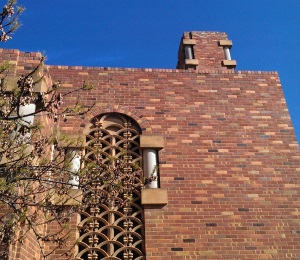24 August 2018
 You can’t redevelop Victoria Square… put a casino in the railway station…build high-rise apartments on the Glenelg foreshore – for some, each idea was unthinkable and each idea needed some kind of critical evaluation.
You can’t redevelop Victoria Square… put a casino in the railway station…build high-rise apartments on the Glenelg foreshore – for some, each idea was unthinkable and each idea needed some kind of critical evaluation.
But working out which buildings, groups of buildings, or indeed places, should be preserved for posterity and how that development is designed, is no simple matter.
Is it the architectural value of a building, the community sentiment around the space, the historical moments it has seen, or simply the ineffable vibe - some interesting combination of these elements that defines it as cool, important and saveable?
And is it enough just to save a building for its features but never make it a living part of the community?
Is there a way to completely redevelop places and spaces, yet still preserve the essence of their heritage?
These are critical planning issues for councils and cities around the world – and the kind of tough questions that will be in the mix when UniSA’s Architecture Museum and its School of Art, Architecture and Design, host a public debate #CoolHeritage on August 31 at 28 Leigh Street, from 3pm to 4.30pm.
The debate will include a panel of expert, artists and advocates including, Chair of the SA Heritage Council, Keith Conlon; researcher from UniSA’s Architecture Museum, Dr Julie Collins; Adelaide artist, Stephen Nova; Dr Julie Nichols from UniSA’s Vernacular Knowledge Research Group and Stuart Symons from Modernist Adelaide. MC for the event is UniSA researcher in the School of Creative Industries Aaron Davis.
Dr Julie Nichols from UniSA’s School of Art, Architecture and Design says built cultural heritage really matters.
“We know this instinctively – we all have landmark places that carry special meaning for us,” Dr Nichols says.
“Cultural heritage has a significant role in the sustainability of intangible and tangible memories and forms associated with our everyday lives.
“It contributes to the diversity of our cities and suburbs, it holds social narratives often untold, which offer intriguing insights and lessons of the past.
“If we consider social values associated with past built environments, these might encompass the community’s perceived identity, sense of belonging, memories and spiritual associations.
“But we also know that those values are dynamic and change over generations.
“As we consider the future of the city and its heritage, now is a really good time to open up the debate on how we develop an approach to heritage and preservation that is sustainable, meaningful, and sympathetic to modern and future needs.
“The goal in being able to balance these considerations is to deliver cool heritage – something that captures the past but is amenable and engaging now.”
More information about this free public event is available at http://aad.unisa.edu.au/research/research-areas/architecture-museum/
You can follow UniSA’s Architecture Mueseum on https://www.instagram.com/unisa.architecturemuseum/
More information: Dr Julie Nicholls office + 61 8 8302 0445
Media contact: Michèle Nardelli mobile 0418 823 673 email michele.nardelli@unisa.edu.au


